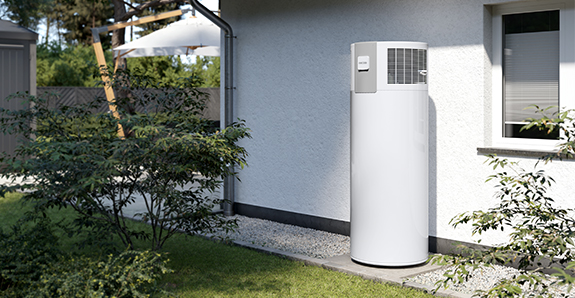Warm water has become a necessity since a lot of our daily tasks revolve around a constant supply of it. Whether you need to start your day by taking a bath or you need to do the dishes at the end of the day, warm water is what you need. To fulfill this need, you must own a hot water system. Learning the operating mechanism of your hot water system is equally important as owning a hot water system. By understanding the science behind the hot water system, you can stay ahead of any expected issues that might appear. Moreover, it helps you troubleshoot any emerging issues. Keep reading to learn how your typical hot water system works, what components work in harmony to provide you with your daily warm bath, and which system is most suitable for your home.
Key Components of a Hot Water System
To make a well-informed decision about which hot water system, you must know the components and the system’s working process. Let’s study the major components of a hot water system and its designated functions.
Water Heater:
The water heater is the main component of the hot water system. It is responsible for warming up the water for your personal use. Depending on the type of your water system and your household needs, you can choose from various heaters available on the market. Regardless of the type of heater, it contains a thermostat and a heating element, which are used to manage the temperature and set the heat according to your preference.
Hot Water Storage Tank:
A storage tank is used to store the heated water until it is needed. The tank size may vary depending on the water storage capacity of the system. The tank is usually insulated to minimize heat loss and maintain the water temperature. As hot water is drawn from the tank, cold water enters to replace it and gets heated by the water heater right away.
Pipework and Valves:
Pipework is responsible for distributing the heated water from the water heater to the multiple outlets connected to the system throughout the building. The pipes are typically made of copper or cross-linked polyethylene (PEX). Two different types of valves, shut-off valves, and pressure-reducing valves, control the water flow and maintain the desired pressure, respectively.
Mixing Valve:
A mixing valve is also known as a tempering or thermostatic mixing valve. Its primary function is to mix cold and warm water to prevent it from overheating. The mixing valve also helps prevent scalding by ensuring the hot water does not exceed a safe temperature.
Pressure Relief Valve:
A pressure relief valve is designed to relieve excess pressure that may build up within the system. In case it exceeds a specific limit, the valve opens to release the excess water and reduce the stress, preventing potential damage or explosion.
Circulation Pump:
It is present in larger hot water systems where quick hot water delivery is required. This pump helps circulate hot water throughout the system, ensuring hot water is readily available at each outlet without waiting for it to travel through the pipes. The circulation pump can be controlled manually or automatically, depending on the system design and requirements.
Step-by-step Guide To Hot Water System Working Mechanism
Step 1: cold water supply
The first step in the complex mechanism of the hot water system is the direction of cold water towards the system via the water resource.
Step 2: water heating
In the next step, the directed cold water starts heating via the heating element. The heating element may differ depending on the type of hot water system that is being used, but the working principle stays the same. The water starts heating up as soon as the heating element is turned on.
Step 3: regulation of temperature
Now that the water has started warming up, you can set the water temperature according to your desire using the thermostat.
Step 4: distribution of water:
The water is distributed to the attached outlets using the pipes connected to your hot water system throughout the building.
Step 5: maintenance of the hot water system
One must focus on the maintenance of the hot water systems. Special safety features are installed n the system depending on the type of system you are using. Regular maintenance is necessary to prevent any kind of injury or mishap. Check for any leaks or breakages and make sure that the system has a proper ventilation system. Seek professional plumbing help if you face any difficulty.
Types of hot water systems and their working mechanism
Electric Hot Water System:
Electric hot water systems use electricity to warm water. Their working mechanism is straightforward. After heating the water for later use, they store it in the storage tanks. They do not need as much maintenance, which makes them an amicable choice for consumers. Some might find its high prices a drawback, but its efficiency makes up for it.
Continuous Hot Water System:
Continuous hot water systems working is quite different from traditional water systems as they do not have a storage tank. They haet the water upon need. They are energy efficient as they heat water only when required resulting in zero energy waste. Moreover, their compact size makes them a very healthy choice for the typical household. They can simply fit anywhere, only consuming up very little space.
Gas Hot Water System:
Gas hot water system works on natural gas. It has s burner that helps heat up the water. They are very efficient when it comes to the quick heating of water. They can almost heat water instantly. It has zero electricity costs, and even the gas used by the burner isn’t wasted, which makes it a reasonable choice in terms of money. The only drawback of such hot water systems is that they require a lot of care and a proper venting system to avoid any mishaps.
Heat Pump Hot Water System:
Heat pump hot water systems are very efficient in their performance. These systems use electricity to absorb heat from their surroundings, ground, and sir and use it to heat the water. They are so efficient that they can produce 5 times more energy than the electricity they used, saving a huge sum on the electricity bills. These types of systems are best for moderate areas.
Instant Hot Water System:
Instant hot water systems, as the name indicates, don’t heat the water beforehand. These types of systems heat water as per requirement with the help of a heat exchanger. The water is heated while flowing through the water pipes. This quality makes it very popular among consumers. These types of systems work on electricity but are very efficient.
Solar Hot Water System:
A solar hot water system works on solar energy. If you want an energy-efficient hot water system, then a solar hot water system might be your best choice. The major advantage of having a solar hot water system is that you won’t have to worry about heavy electricity bills. Moreover, these systems come with a backup and are able to run on electricity if there is not enough sunlight to serve the solar hot water system.
Commercial Hot Water System:
Commercial hot water systems are specifically designed for commercial use only. If you want a hot water system hotel, restaurant, or a large-scale facility, commercial hot water systems are the way to go. They have large storage tanks to store enough amount of water to entertain you throughout the day. They are designed in a manner to serve the requirements of your establishment.
Conclusion:
The bottom line is before owning a hot water system, you need to understand how it operates. Without understanding them, you will be lost if you encounter any issues regarding the system. Understanding the key components of various types of hot water systems is the only way to choose to get hot water.


